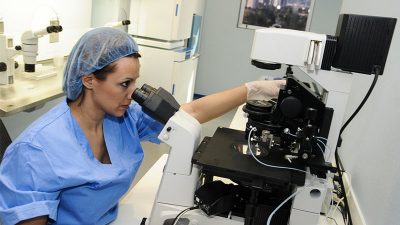Timed Intercourse
Timed intercourse is a simple reproductive technique where sexual intercourse is synchronized with the ovulation, in order to determine the best time to naturally achieve pregnancy.
What is the timed intercourse technique?
Timed intercourse is a simple technique where intercourse is scheduled at the most fertile time of the menstrual cycle, synchronizing ovulation with intercourse.
First, a gentle ovarian stimulation is performed: A series of hormones – similar to those produced by the woman herself (gonadotropins) – will be used. The stimulation will periodically be monitored, since several follicles usually develop and if their number is too high, multiple gestations can occur.
Once one or two follicles have reached the appropriate size (18 mm in diameter) the hCG hormone is administered to trigger ovulation, which will occur 34-38 hours later and that is when sexual intercourse will be indicated.
With this ovulation induction, the ovulation date is determined and in this way, the couple is informed of the most appropriate days to have sexual intercourse.
Throughout the treatment, your personal assistant will be available at all times to answer any questions you may have and support you in this very special moment.
For whom is this technique indicated?
Timed intercourse is indicated for
- Couples where the woman has a lack of ovulation (anovulation).
- Couples where the woman suffers from ovulatory dysfunction (dysovulation).
- Couples where the woman suffers from glandular disorders that affect ovarian function.
- Couples with infertility of unknown origin.
- Couples who do not want to resort to in vitro fertilization techniques or artificial insemination for moral or religious reasons.
Before starting a cycle of directed intercourse, it is necessary to verify that the couple complies with
a series of conditions :
- To guarantee that there is no risk of contagion to the partner and/or future baby, ruling out the risk of possible hepatitis C or B, HIV, rubella (German measles), syphilis and toxoplasmosis.
- To rule out possible uterine malformations through an ultrasound scan and possible hormonal pathologies through a hormonal analysis.
- To check the patency of the fallopian tubes to ensure the passage of sperm in order for fertilization to occur, and then for the zygote to reach the uterus.
- To verify by means of a semen analysis that there are no seminal alterations.
- The age of the woman, which directly influences the chances of success or failure. From the age of 36 is approximately when the chances of pregnancy begin to decrease.




